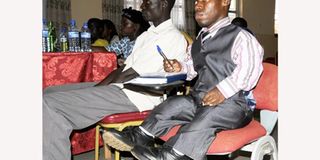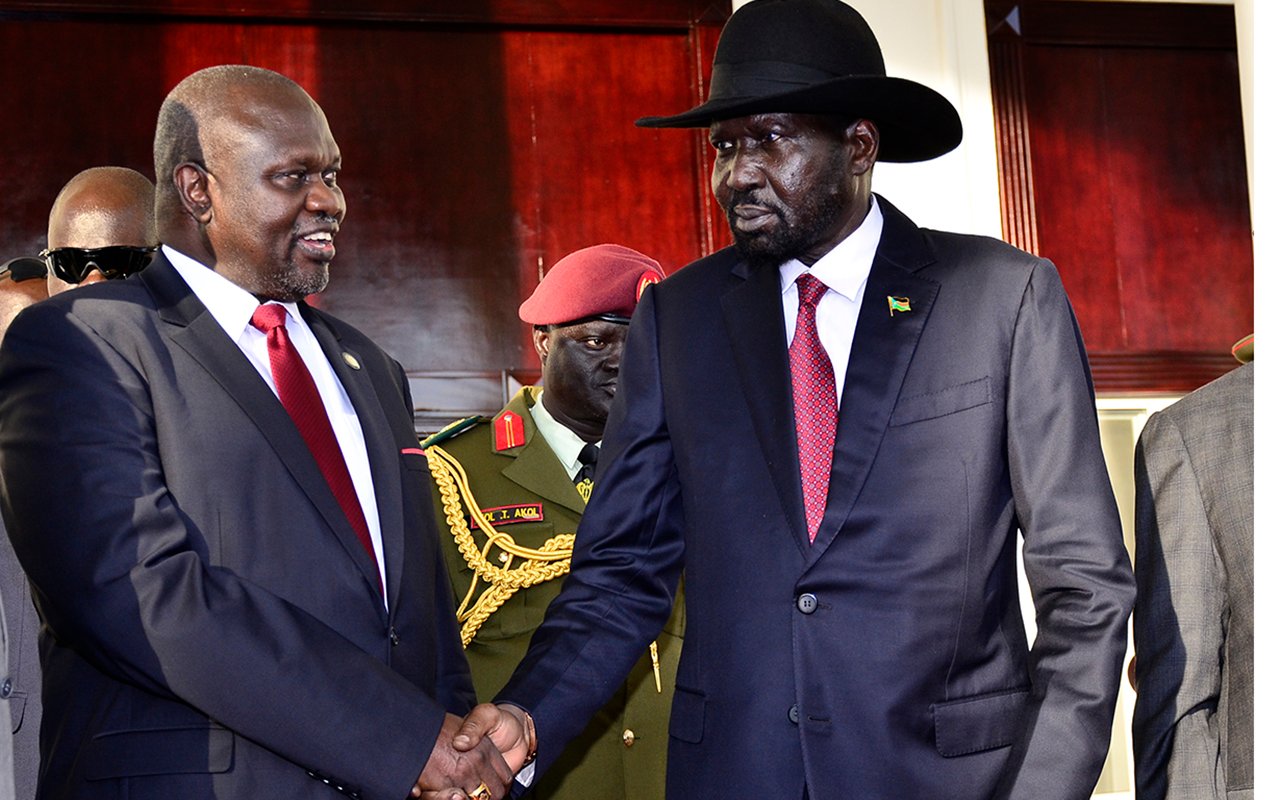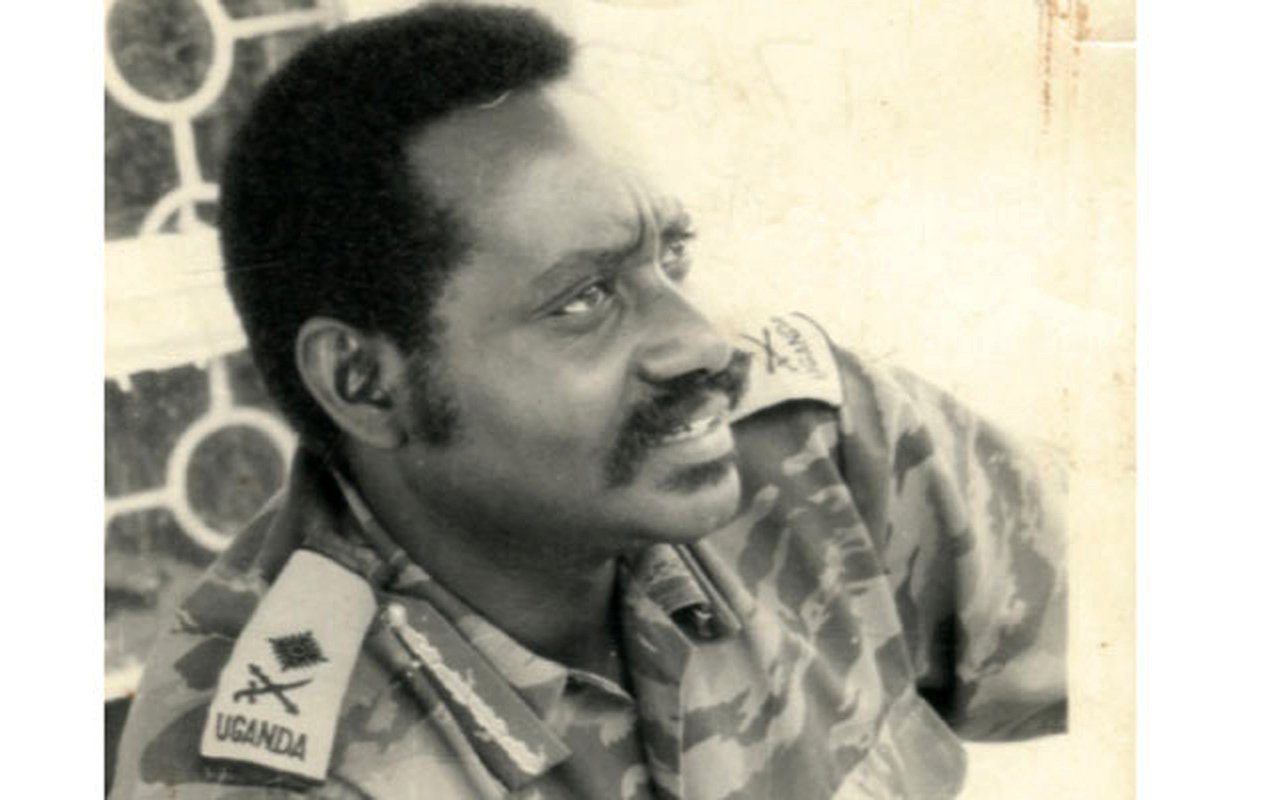Little people: why are they born different from the rest?

Joel Musana the programmes coordinator Little People Uganda, taking notes during the Little People’s Conference last weekend. sitting on chairs which are not suited for them for a long time numbs Little people’s muscles. Photo by Stephen Otage
What you need to know:
Their faces are of adults but they are easily mistaken for children because of their short stature. What makes them different?
You must have at some point referred to this category of people as dwarfs. But to the Little People, this term is derogatory. It’s an additional insult to the marginalisation they get from society.
The Oxford Advanced Learner’s Dictionary International Student’s edition defines a dwarf as a creature in stories like A Small Man, who has magical powers and who is usually described as living and working underground or an extremely small person who will never grow to normal size because of a physical problem.
However, medically these people are just People of Short Stature.
Joel Musana,32, who works as a liaison officer at Little People of Uganda, a non-government organisation advocating the development and rights of people of his kind, he explains that by calling them dwarfs, the name exacerbates the negative attitude society has towards them. Giving himself as an example, he says people look at their stature and make judgments which often hurt them.
The Kyambogo University graduate of Microfinance studies says society thinks Little People have low intellectual and physical abilities. He cites a time he applied for a job in a bank after completing his studies at university but was denied the job despite having the necessary qualifications.
“I was very hurt. After the interview, I told a former coursemate about it. He had not applied for the job yet I had performed better than him but when he walked there a few days later, he was given the job.”
He gives another example of how he went to Mulago hospital for treatment only to be ignored by a health worker who thought he was a child simply because he was shorter than the counter at the reception. It took the intervention of a guard for the receptionist to attend to him.
Within a span of five minutes of this interview, Musana had listed more than 15 examples of injustices against people of his stature.
Such are the tribulations of the little people whose condition until recently was not treated as a disability.
Why are they short-statured?
According to Dr Daniel Tumwine, the vice president of the Uganda Pediatrics Association, the commonest cause of short stature is achondroplasia. He says 80 per cent of short people have this condition which causes shortness. This is a condition related to the formation of bones.
He explains that when bones are being formed in the womb, they start out as soft tissue in form of cartilage. The hardening process is supposed to be gradual until the age of 24. However, in Little people, the cartilage hardens suddenly.
“People grow because their bones are soft but for dwarfs, their bones grow very fast and the causes are due to spontaneous mutations,” He explains that dwarfs are normal people just as being short or tall is normal.
“When you go to South Sudan, they will call people from Uganda short. Just like the pygmies and the Batwa, they are normal people but what is important is growth hormones which when detected to be lacking at an early age can be injected into such a person,” says the doctor.
There are over 200 conditions that can cause dwarfism, each with its own distinct features, symptoms and causes. Most of these conditions have genetic and mutational causes and the typical characteristic all these forms of dwarfism have in common is a significantly short adult height compared to that of an average human being.
Skeletal dysplasias (abnormal bone development) are the most common causes of dwarfism. These conditions affect bone and cartilage growth and typically result in disproportionate short stature.
Achondroplasia is the most common type of skeletal dysplasia, occurring in around one in 25,000 children with both sexes at equal risk.
85 per cent of children born with this disorder have average-size parents and it is associated with advanced paternal age.
Dwarfism can also be inherited from one or both parents. Dwarfism has other causes, including metabolic or hormonal disorders in infancy or childhood.
Chromosomal abnormalities, pituitary gland disorders (which influence growth and metabolism), absorptive problems (when the body can’t absorb nutrients adequately), and kidney disease can all lead to short stature if a child fails to grow at a normal rate.
However, most skeletal dysplasias are caused by spontaneous genetic mutation in the egg or sperm cells from average-size parents during conception. It is not known why this occurs, but it may happen in any pregnancy.
According to Annet Nakyeyune, who after giving birth to an achondroplasic daughter, decided to come up with a membership association for the Little people with 400 members today from all over Uganda and it is estimated that the little people could be about 3,000 in number.
She says the biggest challenge the association faces is the low self-esteem and perception among the members and discrimination from the main disability movement which sometimes frustrates their programs.
The association is currently focusing on raising awareness for parents, little people and the public. The members have the opportunity to meet learn and socialise as well as receive messages on economic empowerment through alternative livelihood opportunities.




